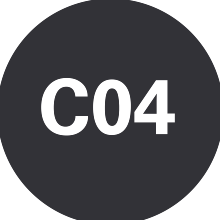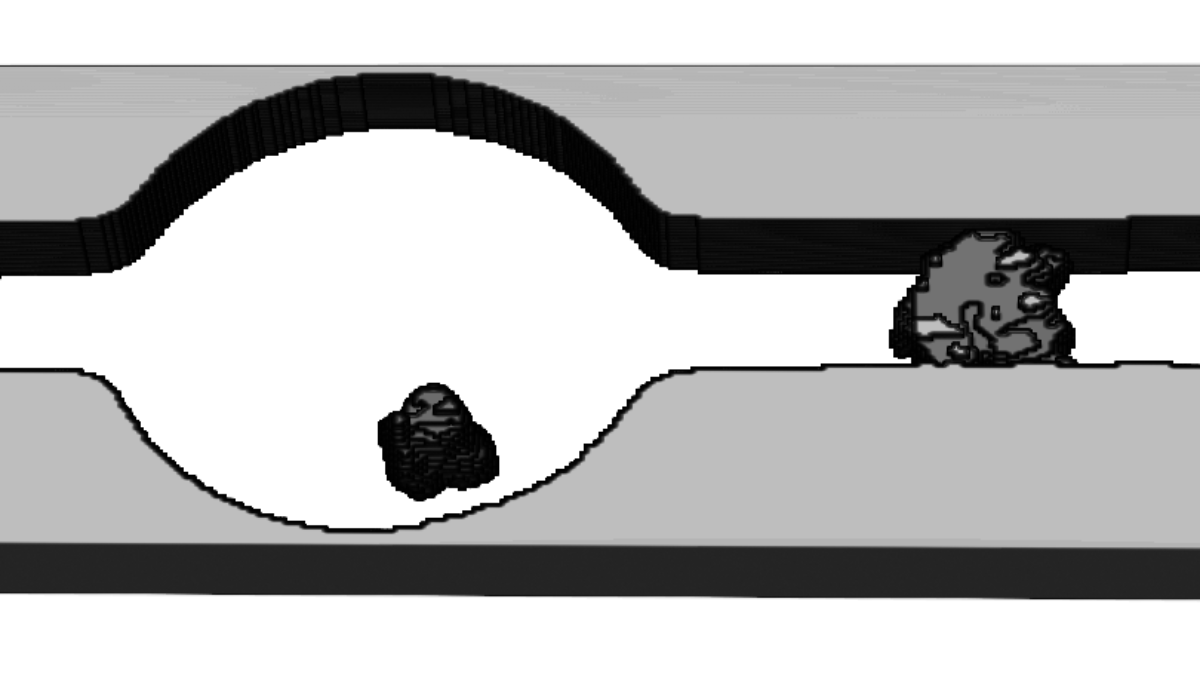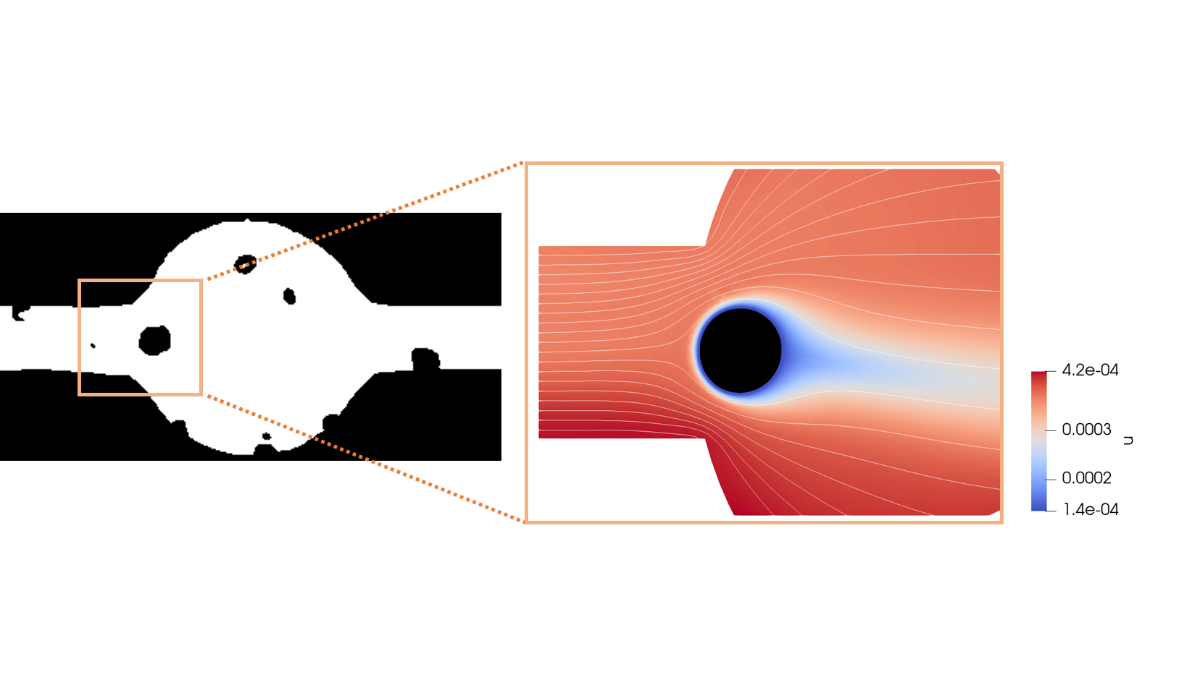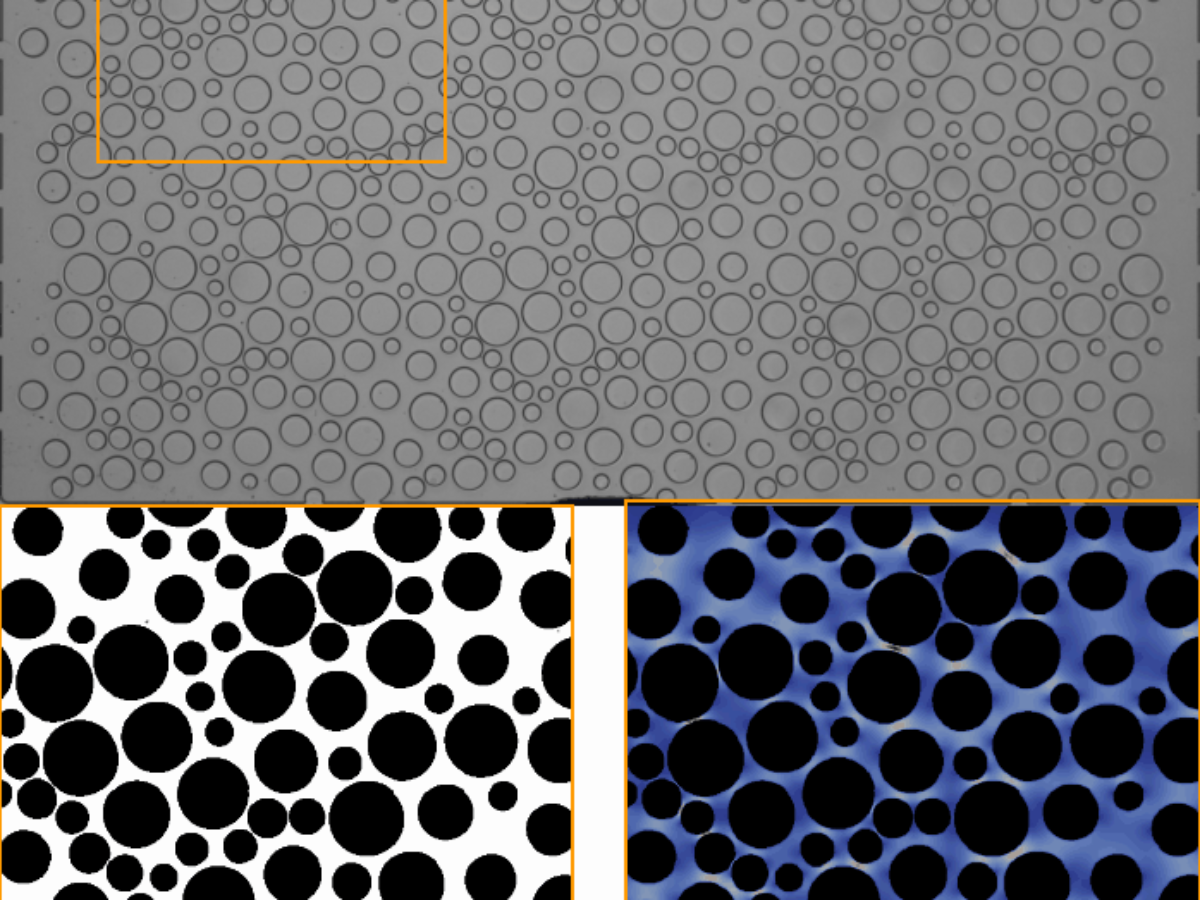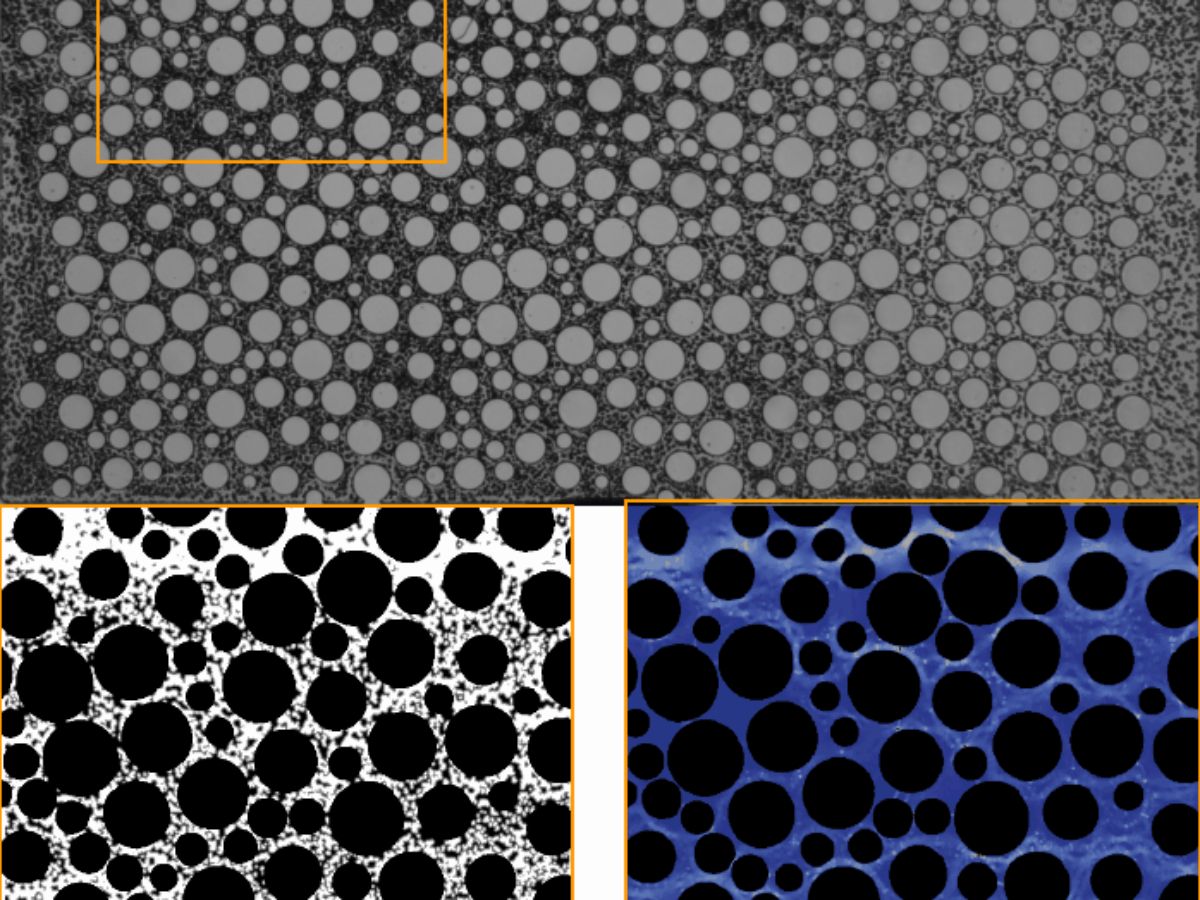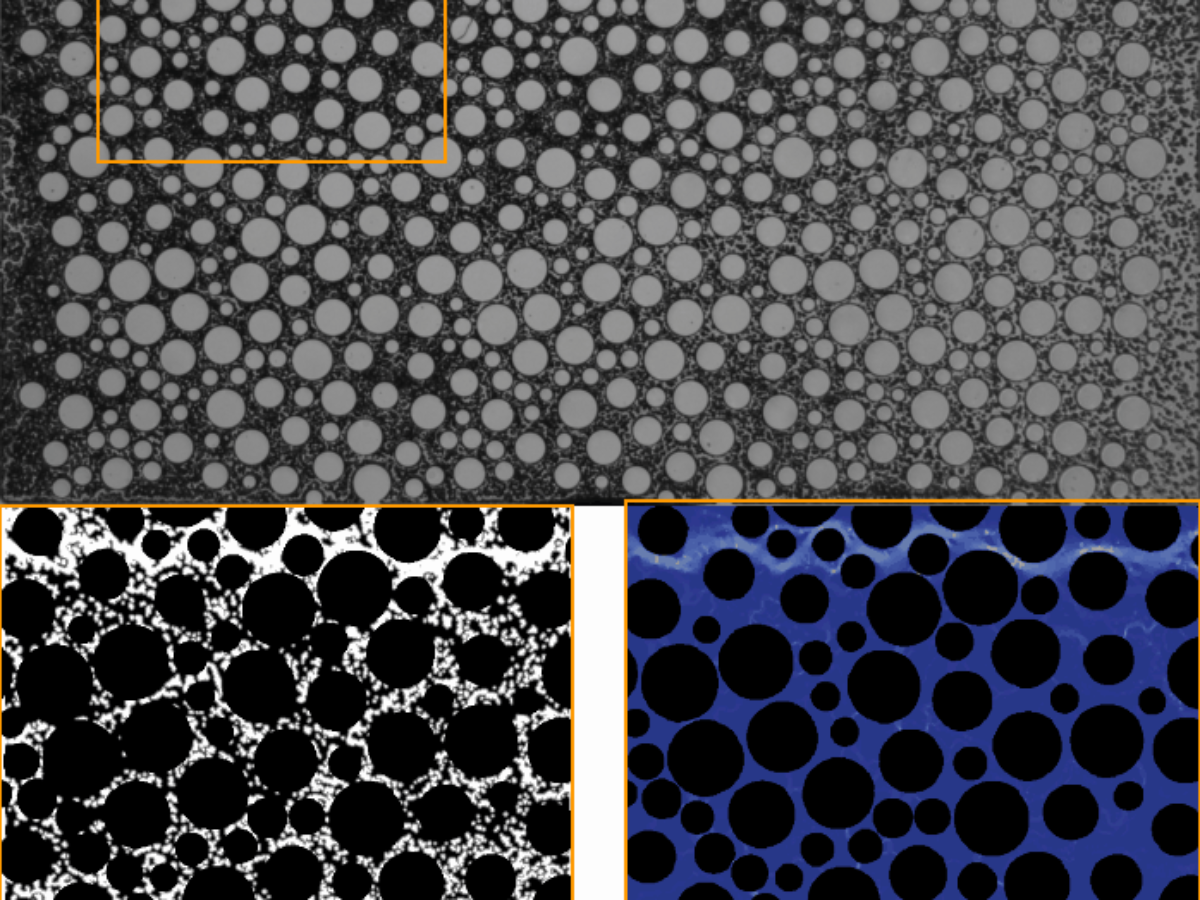People
Publications
Data sets published by project C04 can be found on the DaRUS website
Publications in scientific journals
(Journal-) Articles
- Lee, D., Weinhardt, F., Hommel, J., Piotrowski, J., Class, H., & Steeb, H. (2023). Machine learning assists in increasing the time resolution of X-ray computed tomography applied to mineral precipitation in porous media. Scientific Reports, 13(1), Article 1. https://doi.org/10.1038/s41598-023-37523-0
- Weinhardt, F., Deng, J., Hommel, J., Vahid Dastjerdi, S., Gerlach, R., Steeb, H., & Class, H. (2022). Spatiotemporal Distribution of Precipitates and Mineral Phase Transition During Biomineralization Affect Porosity–Permeability Relationships. Transport in Porous Media. https://doi.org/10.1007/s11242-022-01782-8
- Hommel, J., Gehring, L., Weinhardt, F., Ruf, M., & Steeb, H. (2022). Effects of Enzymatically Induced Carbonate Precipitation on Capillary Pressure–Saturation Relations. Minerals, 12(10), Article 10. https://doi.org/10.3390/min12101186
- Weinhardt, F., Class, H., Dastjerdi, S. V., Karadimitriou, N., Lee, D., & Steeb, H. (2021). Experimental Methods and Imaging for Enzymatically Induced Calcite Precipitation in a Microfluidic Cell. Water Resources Research, 57(3), Article 3. https://doi.org/10.1029/2020wr029361
- Wagner, A., Eggenweiler, E., Weinhardt, F., Trivedi, Z., Krach, D., Lohrmann, C., Jain, K., Karadimitriou, N., Bringedal, C., Voland, P., Holm, C., Class, H., Steeb, H., & Rybak, I. (2021). Permeability Estimation of Regular Porous Structures: A Benchmark for Comparison of Methods. Transport in Porous Media, 138, 1–23. https://doi.org/10.1007/s11242-021-01586-2
- Class, H., Bürkle, P., Sauerborn, T., Trötschler, O., Strauch, B., & Zimmer, M. (2021). On the role of density-driven dissolution of CO2 in phreatic karst systems. Water Resources Research, n/a(n/a), Article n/a. https://doi.org/10.1029/2021WR030912
- von Wolff, L., Weinhardt, F., Class, H., Hommel, J., & Rohde, C. (2021). Investigation of Crystal Growth in Enzymatically Induced Calcite Precipitation by Micro-Fluidic Experimental Methods and Comparison with Mathematical Modeling. Transport in Porous Media. https://doi.org/10.1007/s11242-021-01560-y
- Emmert, S., Davis, K., Gerlach, R., & Class, H. (2020). The Role of Retardation, Attachment and Detachment Processes during Microbial Coal-Bed Methane Production after Organic Amendment. Water, 12(11), Article 11. https://doi.org/10.3390/w12113008
- Emmert, S., Class, H., Davis, K. J., & Gerlach, R. (2020). Importance of specific substrate utilization by microbes in microbially enhanced coal-bed methane production: A modelling study. International Journal of Coal Geology, 229, 103567. https://doi.org/10.1016/j.coal.2020.103567
- Beck, M., & Class, H. (2019). Modelling fault reactivation with characteristic stress-drop terms. Advances in Geosciences, 49, 1--7. https://doi.org/10.5194/adgeo-49-1-2019
- Cunningham, A. B., Class, H., Ebigbo, A., Gerlach, R., Phillips, A. J., & Hommel, J. (2018). Field-scale modeling of microbially induced calcite precipitation. Computational Geosciences. https://doi.org/10.1007/s10596-018-9797-6
- Hommel, J., Coltman, E., & Class, H. (2018). Porosity--Permeability Relations for Evolving Pore Space: A Review with a Focus on (Bio-)geochemically Altered Porous Media. Transport in Porous Media, 124(2), Article 2. https://doi.org/10.1007/s11242-018-1086-2
Research
About this Project
Porosity and permeability are two major hydraulic properties that govern flow through porous media, while there are different processes in many different fields of applications that can cause pore space to evolve due to fluid-solid phase change. For the time being, this project puts a focus on induced calcite precipitation as an engineering option for targeted sealing of flow pathways in porous media or for targeted improvement of soil strength. Noteworthy, hydraulic alterations due to calcite precipitation are inseparable from mechanical alterations. While our primary focus is first of all on the experimental observation of the hydraulic alterations in terms of porosity-permeability relations due to growth of carbonates in the pore space, we plan to address later on also the topic of mechanical alterations.
Results
So far, the project has had a strong focus on experimental EICP (enzyme-induced calcite precipitation) in microfluidic cells.
Experimental setups and protocols were developed and in cooperation with other sub-projects of this CRC, valuable experience in different imaging techniques (microscopy, XRCT) could be gathered. This is important for analyzing, also quantitatively, the observed pore-space alterations in the flow cells. Observed calcite precipitation can be correlated with pressure monitoring for concluding on permeability alterations.
It is important to analyse precipitation patterns in pore throats and pore bodies for deriving porosity-permeability relations from morphological changes in the pores. This requires a reliable workflow to generate and to observe reproducible precipitation patterns. It is worth noting that, in this regard, quasi-1D microfluidic setups behave different than 2D setups where the imposed flow can go around evolving obstacles more easily than in 1D setups.
The experimental data produced in the project were already used for comparison with pore-scale Navier-Stokes models, pore-network models, and with a phase-field model for crystal growth.
The experimental work in ongoing work will focus more strongly on MICP in microfluidic setups. We expect that we can compare calcite precipitation patterns and corresponding permeability changes between EICP and MICP; this would allow to distinguish the characteristic differences of both methods for porosity-permeability relations.
Experimental data can be used for comparison with pore-scale models, in this project and in those of the collaborators, and we further plan to have REV-scale data available to bridge the scales and implement corresponding relations in Darcy-scale models.
Future Work
Furthermore, we plan to have also new model development included in the workplan of this project. An existing model for MICP/EICP can be coupled with fluid flow and linear-elastic geomechanics. The model can then be applied to porous-media MICP/EICP but also to MICP/EICP in fractured media, since both concepts can be made available in the software platform Dumux.
Perspectively, this part of the work aims at creating a link to Project Area B.
International Cooperation
There has been a long-standing collaboration between the work groups of Holger Class and Rainer Helmig in Stuttgart and the group of Robin Gerlach and Al Cunningham at Montana State University. The intensive scientific exchange resulted in a number of high-ranked joint publications.
In the Biofilm Center at MSU Bozeman, there is an outstanding experimental facility which will be of great use for Research Project C04. Altogether, within SFB 1313 the successful joint research is expected to be continued.
For further information please contact

Holger Class
apl. Prof. Dr. Ing.Principal Investigator, Research Project C04, Central Project Z


